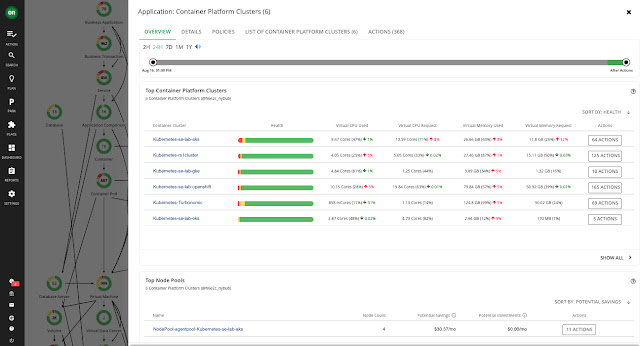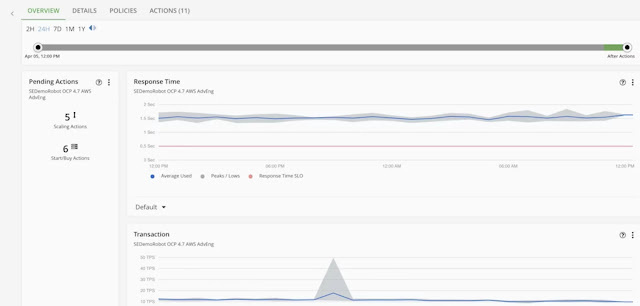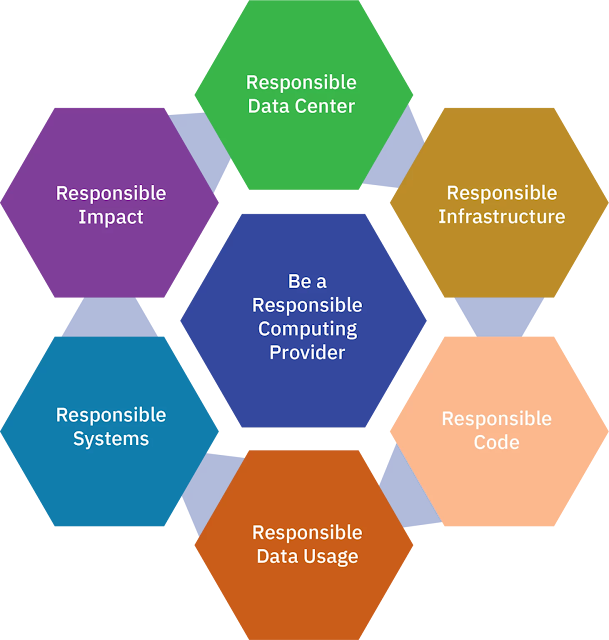Artificial intelligence (AI) adoption is here. Organizations are no longer asking whether to add AI capabilities, but how they plan to use this quickly emerging technology. In fact, the use of artificial intelligence in business is developing beyond small, use-case specific applications into a paradigm that places AI at the strategic core of business operations. By offering deeper insights and eliminating repetitive tasks, workers will have more time to fulfill uniquely human roles, such as collaborating on projects, developing innovative solutions and creating better experiences.
This advancement does not come without its challenges. While
42% of companies say they are exploring AI technology, the failure rate is high; on average,
54% of AI projects make it from pilot to production. To overcome these challenges will require a shift in many of the processes and models that businesses use today: changes in IT architecture, data management and culture. Here are some of the ways organizations today are making that shift and reaping the benefits of AI in a practical and ethical way.
How companies use artificial intelligence in business
Artificial intelligence in business leverages data from across the company as well as outside sources to gain insights and develop new business processes through the development of AI models. These models aim to reduce rote work and complicated, time-consuming tasks, as well as help companies make strategic changes to the way they do business for greater efficiency, improved decision-making and better business outcomes.
A common phrase you’ll hear around AI is that artificial intelligence is only as good as the data foundation that shapes it. Therefore, a well-built AI for business program must also have a good data governance framework. It ensures the data and AI models are not only accurate, providing a higher-quality outcome, but that the data is being used in a safe and ethical way.
Why we’re all talking about AI for business
It’s hard to avoid conversations about artificial intelligence in business today. Healthcare, retail, financial services, manufacturing—whatever the industry, business leaders want to know how using data can give them a competitive advantage and help address the post-COVID challenges they face each day.
Much of the conversation has been focused on generative AI capabilities and for good reason. But while this groundbreaking AI technology has been the focus of media attention, it only tells part of the story. Diving deeper, the potential of AI systems is also challenging us to go beyond these tools and think bigger: How will the application of AI and machine learning models advance big-picture, strategic business goals?
Artificial intelligence in business is already driving organizational changes in how companies approach data analytics and cybersecurity threat detection. AI is being implemented in key workflows like talent acquisition and retention, customer service, and application modernization, especially paired with other technologies like virtual agents or chatbots.
Recent AI developments are also helping businesses automate and optimize HR recruiting and professional development, DevOps and cloud management, and biotech research and manufacturing. As these organizational changes develop, businesses will begin to switch from using AI to assist in existing business processes to one where AI is driving new process automation, reducing human error, and providing deeper insights. It’s an approach known as AI first or AI+.
Building blocks of AI first
What does building a process with an AI first approach look like? Like all systemic change, it is a step-by-step process—a ladder to AI—that lets companies create a clear business strategy and build out AI capabilities in a thoughtful, fully integrated way with three clear steps.
Configuring data storage specifically for AI
The first step toward AI first is modernizing your data in a hybrid multicloud environment. AI capabilities require a highly elastic infrastructure to bring together various capabilities and workflows in a team platform. A hybrid multicloud environment offers this, giving you choice and flexibility across your enterprise.
Building and training foundation models
Creating foundations models starts with clean data. This includes building a process to integrate, cleanse, and catalog the full lifecycle of your AI data. Doing so allows your organization the ability to scale with trust and transparency.
Adopting a governance framework to ensure safe, ethical use
Proper data governance helps organizations build trust and transparency, strengthening bias detection and decision making When data is accessible, trustworthy and accurate, it also enables companies to better implement AI throughout the organization.
What are foundation models and how are they changing the game for AI?
Foundation models are AI models trained with machine learning algorithms on a broad set of unlabeled data that can be used for different tasks with minimal fine-tuning. The model can apply information it’s learned about one situation to another using self-supervised learning and transfer learning. For example, ChatGPT is built upon the GPT-3.5 and GPT-4 foundation models created by OpenAI.
Well-built foundation models offer significant benefits; the use of AI can save businesses countless hours building their own models. These time-saving advantages are what’s attracting many businesses to wider adoption. IBM expects that in two years, foundation models will power about a third of AI within enterprise environments.
From a cost perspective, foundation models require significant upfront investment; however, they allow companies to save on the initial cost of model building since they are easily scaled to other uses, delivering higher ROI and faster speed to market for AI investments.
To that end, IBM is building a set of domain-specific foundation models that go beyond natural language learning models and are trained on multiple types of business data, including code, time-series data, tabular data, geospatial data, semi-structured data, and mixed-modality data such as text combined with images. The first of which, Slate, was recently released.
AI starts with data
To launch a truly effective AI program for your business, you must have clean quality datasets and an adequate data architecture for storing and accessing it. The digital transformation of your organization must be mature enough to ensure data is collected at the needed touchpoints across the organization and the data must be accessible to whoever is doing the data analysis.
Building an effective hybrid multicloud model is essential for AI to manage the massive amounts of data that must be stored, processed and analyzed. Modern data architectures often employ a data fabric architectural approach, which simplifies data access and makes self-service data consumption easier. Adopting a data fabric architecture also creates an AI-ready composable architecture that offers consistent capabilities across hybrid cloud environments.
Governance and knowing where your data come from
The importance of accuracy and the ethical use of data makes data governance an important piece in any organization’s AI strategy. This includes adopting governance tools and incorporating governance into workflows to maintain consistent standards. A data management platform also enables organizations to properly document the data used to build or fine-tune models, providing users insight into what data was used to shape outputs and regulatory oversight teams the information they need to ensure safety and privacy.
Key considerations when building an AI strategy
Companies that adopt AI first to effectively and ethically use AI to drive revenue and improve operations will have the competitive advantage over those companies that fail to fully integrate AI into their processes. As you build your AI first strategy, here are some critical considerations:
How will AI deliver business value?
The first step when integrating AI into your organization is to identify the ways various AI platforms and types of AI align with key goals. Companies should not only discuss how AI will be implemented to achieve these goals, but also the desired outcomes.
For example, data opens opportunities for more personalized customer experiences and, in turn, a competitive edge. Companies can create automated customer service workflows with customized AI models built on customer data. More authentic chatbot interactions, product recommendations, personalized content and other AI functionality have the potential to give customers more of what they want. In addition, deeper insights on market and consumer trends can help teams develop new products.
For a better customer experience—and operational efficiency—focus on how AI can optimize critical workflows and systems, such as customer service, supply chain management and cybersecurity.
How will you empower teams to make use of your data?
One of the key elements in
data democratization is the concept of data as a product. Your company data is spread across on-premises data centers, mainframes, private clouds, public clouds and edge infrastructure. To
successfully scale your AI efforts, you will need to successfully use your data “product.”
A hybrid cloud architecture enables you to use data from disparate sources seamlessly and scale effectively throughout the business. Once you have a grasp on all your data and where it resides, decide which data is the most critical and which offers the strongest competitive advantage.
How will you ensure AI is trustworthy?
With the rapid acceleration of AI technology, many have begun to ask questions about ethics, privacy and bias. To ensure AI solutions are accurate, fair, transparent and protect customer privacy, companies must have well-structured data management and AI lifecycle systems in place.
Regulations to protect consumers are ever expanding; In July 2023, the EU Commission proposed
new standards of GDPR enforcement and a data policy that would go into effect in September. Without proper governance and transparency, companies risk reputational damage, economic loss and regulatory violations.
Examples of AI being used in the workplace
Whether using AI technology to power chatbots or write code, there are countless ways deep learning, generative AI, natural language processing and other AI tools are being deployed to optimize business operations and customer experience. Here are some examples of business applications of artificial intelligence:
Coding and application modernization
Companies are using AI for application modernization and enterprise IT operations, putting AI to work automating coding, deploying and scaling. For example,
Project Wisdom lets developers using Red Hat Ansible input a coding command as a straightforward English sentence through a natural-language interface and get automatically generated code. The project is the result of an IBM initiative called AI for Code and the release of IBM Project CodeNet, the largest dataset of its kind aimed at teaching AI to code.
Customer service
AI is effective for creating personalized experiences at scale through chatbots, digital assistants and other customer interfaces. McDonald’s, the world’s largest restaurant company, is building
customer care solutions with IBM Watson AI technology and natural language processing (NLP) to accelerate the development of its automated order taking (AOT) technology. Not only will this help scale the AOT tech across markets, but it will also help tackle integrations including additional languages, dialects and menu variations.
Optimizing HR operations
When IBM implemented
IBM watsonx Orchestrate as part of a pilot program for IBM Consulting in North America, the company saved 12,000 hours in one quarter on manual promotion assessment tasks, reducing a process that once took 10 weeks down to five. The pilot also made it easier to gain important HR insights. Using its digital worker tool, HiRo, IBM’s HR team now has a clearer view of each employee up for promotion and can more quickly assess whether key benchmarks have been met.
The future of AI in business
AI in business holds the potential to improve a wide range of business processes and domains, especially when the organization takes an AI first approach.
In the next five years, we will likely see businesses scale AI programs more quickly by looking to areas where AI has begun to make recent advancements, such as digital labor, IT automation, security, sustainability and application modernization.
Ultimately, success with new technologies in AI will rely on the quality of data, data management architecture, emerging foundation models and good governance. With these elements—and with business-driven, practical objectives—businesses can make the most out of AI opportunities.
Source: ibm.com























